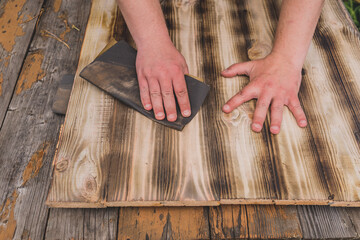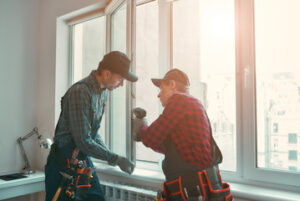Insulation Perth reduces heating and cooling costs by restricting the flow of thermal energy. It does this by providing an effective resistance to heat flow via conduction, convection, and radiation.
Bulk insulation materials use air pockets to resist heat flow, similar to how penguins fluff their feathers to stay warm. This stops the flow of heat through conductors such as metals.

Insulation is a once-only cost that can be paid in around 3-5 years through reduced energy bills. In addition, insulation can reduce energy consumption and help to conserve the environment. It also helps to increase property values and improve the return on investment for a home or business.
A good insulation will retain heat by slowing the flow of thermal energy and reducing air movement. It will also prevent moisture build-up, which can lead to corrosion and damage. It is important to choose the right type of insulation for your particular climate. This is determined by the R-value, which measures a material’s resistance to the flow of thermal energy.
The most common insulator materials are fiberglass and cellulose. Fiberglass is available in batts and as a loose-fill that can be blown into existing wall cavities. It is relatively inexpensive and is often used in new construction or to-the-bones renovation. It can be installed at any level of the wall, but it is more effective in higher walls than in lower ones.
Other types of insulators are made from ceramics and porcelain. Ceramic insulators can be made from clay, quartz or alumina and feldspar, and they are typically covered with a smooth glaze to shed water. They are a safe choice for high-voltage power transmission lines, as they will reduce the electric field at the point of attachment to prevent corona discharge.
Glass and ceramic insulators can be used in any electrical system, including AC and DC systems. They can be manufactured in various shapes, sizes and thicknesses to match any requirement. In addition to their insulating properties, they are light in weight and durable. They are suitable for use in both low and high-voltage lines, and they are easy to install.
Insulation can be used in many different types of structures, and it is a good option for both new and existing buildings. It can be inserted into the walls, roof and floor of a building to increase its energy efficiency. It is also a good choice for piping, which can be insulated to prevent heat loss.
Benefits
Insulation is a thermally resistant barrier that inhibits the migration of heat into and out of your home. It helps keep your house cooler in the summer and warmer in the winter, thus lowering energy bills. In fact, the energy saved by installing insulation can pay for itself within a year or less, depending on your usage of electricity and natural gas.
Many types of insulation are available, from fiberglass batts to mineral wool and cellulose. The type of insulation you choose depends on several factors, including climate, cost, and R-value (the number that indicates the amount of thermal resistance it offers). The R-values recommended for different areas of your home are determined by building codes. In general, the higher the R-value, the better the insulation.
Another benefit of insulation is that it reduces noise transmission from room to room and between floors. This can be especially important for people with children, elderly individuals, or those who work from home.
In addition, some types of insulation are nonflammable and offer a degree of fire protection to your home. For example, cellulose insulation is treated with borate, which makes it fire retardant. It also slows the spread of fire by forming a hard target that the fire can’t penetrate. This significantly increases the safety of your family and property.
Insulation is also eco-friendly, helping to preserve non-renewable fossil fuels and lower carbon dioxide emissions that contribute to global warming and acid rain. Moreover, insulation decreases energy consumption in heating and cooling your home, which reduces air pollution from burning fossil fuels.
Additionally, a well-insulated home is a healthier one, improving indoor air quality (IAQ). Poor IAQ can cause allergies, headaches, fatigue, and other health problems. Good insulation reduces pollutants by preventing them from entering the house and by allowing fresh air to circulate freely. It can also help prevent the penetration of pests, such as wood-eating ants and termites, which can damage your house and pose a threat to your family’s health. In addition, a well-insulated attic can increase the value of your home.
Installation
Insulation installation is a complex process that requires professional knowledge and experience to ensure proper performance. It also involves a series of health and safety risks. The correct installation of insulation can significantly improve energy efficiency, reduce energy costs, and enhance the comfort of a home. It can even prevent moisture damage.
There are many types of insulation available in the market, each offering unique benefits to homeowners. The most common is fiberglass, which provides an affordable and easy-to-install solution. Other options include cellulose, which is made of recycled paper fibers and offers excellent thermal performance. In addition, spray foam insulation is an effective option for difficult to reach areas of a home.
The most important consideration is the type of insulation that is best suited for your home. For new construction, slab insulation should be installed during the construction process and positioned correctly to provide the best thermal performance. This can be accomplished by installing a polyethylene air barrier or low-permeable foam board in the concrete slab and footing before backfilling. If you’re building a new house, consult a local professional or check out Building America’s climate-specific publications to find the right construction details for your region.
When it comes to existing homes, the best option is to install insulation in the attic. This will provide a significant increase in the R value of the house. In addition, it will help to reduce high-frequency sound transfer. During the attic insulation process, it is critical to remember that the paper face of the batting should always be facing down when attic-level and up when below the first floor.
For new construction, a mineral wool batt can be used as an attic insulation alternative. This product is a more expensive but has a similar R value to fiberglass batts. It is also fire-resistant and has a higher sound reduction rating than fiberglass.
Insulators are used in electrical equipment to separate and support electrical conductors without allowing current to pass through them. They are usually designed to withstand the voltage (called the breakdown voltage) at which electrons gain enough energy to move into the band that contains the highest number of electrons. This is known as the valence band.
Maintenance
Like all mechanical systems, insulation is required to be inspected and maintained regularly. If these inspections aren’t performed, it’s easy for damage or changes to occur that render the insulation ineffective. In the case of industrial insulation, these issues could lead to compromised personnel protection, reduced process control and efficiency, increased rates of corrosion, ongoing energy losses, and leaks.
The good news is that most insulation problems can be prevented with regular maintenance. This maintenance typically consists of visual inspection, cleaning, and occasional removal and replacement of damaged sections. In addition, it is possible to design the insulation system in such a way that the need for maintenance and repair is minimized. For example, specifying the use of vapor stops and insulation sections that can be removed without opening the equipment will limit the area that needs to be accessed, thus reducing the potential for damage and making it easier to perform repairs.
Depending on the circumstances, it may also be beneficial to use pre-fabricated insulation sections which are manufactured in a shop or factory under controlled conditions. This can help to ensure tight seams and a better overall performance. It is also advisable to install insulation in areas that can be easily inspected and to provide access ports for this purpose.
Insulation on pipes, ducts and tanks must endure temperature fluctuations, humidity and physical damage. This can gradually degrade the materials and reduce their effectiveness over time. It is essential to follow a documented maintenance schedule for pipe and duct insulation to maximize energy savings and extend the service life of the insulation system.
Some of the most common indicators of poor insulation include high energy bills, unexplained drafts, moisture problems and mold or mildew growth. Insulation that is in good condition helps to keep indoor air quality healthy, maintains temperature uniformity, and prevents condensation or ice buildup on cold systems.
To maintain insulation in your home, make sure that it is free of gaps and cracks, and that there are no pests living in or under the insulation. Inspect for signs of wear and damage, and clean stains promptly to reduce the risk of moisture and mold.

